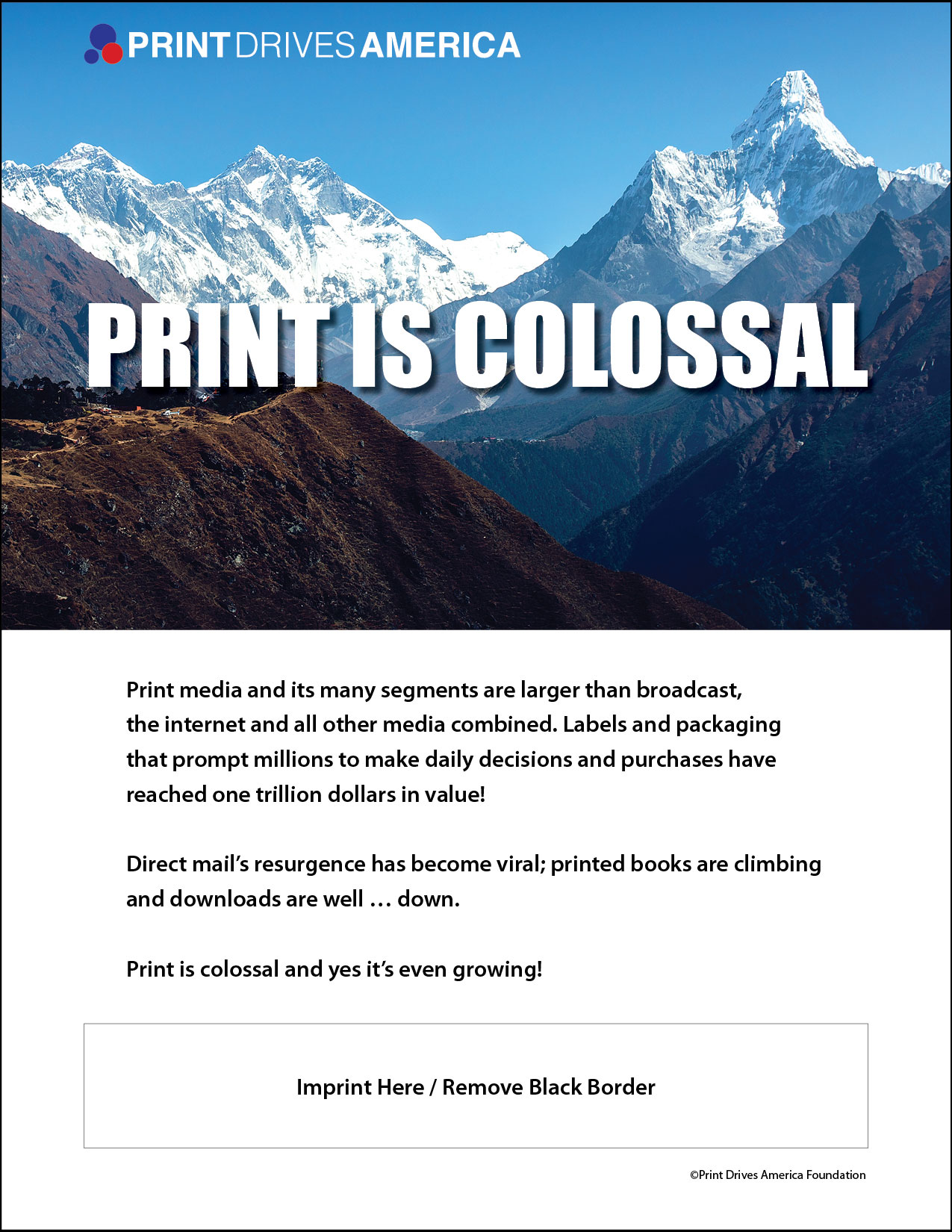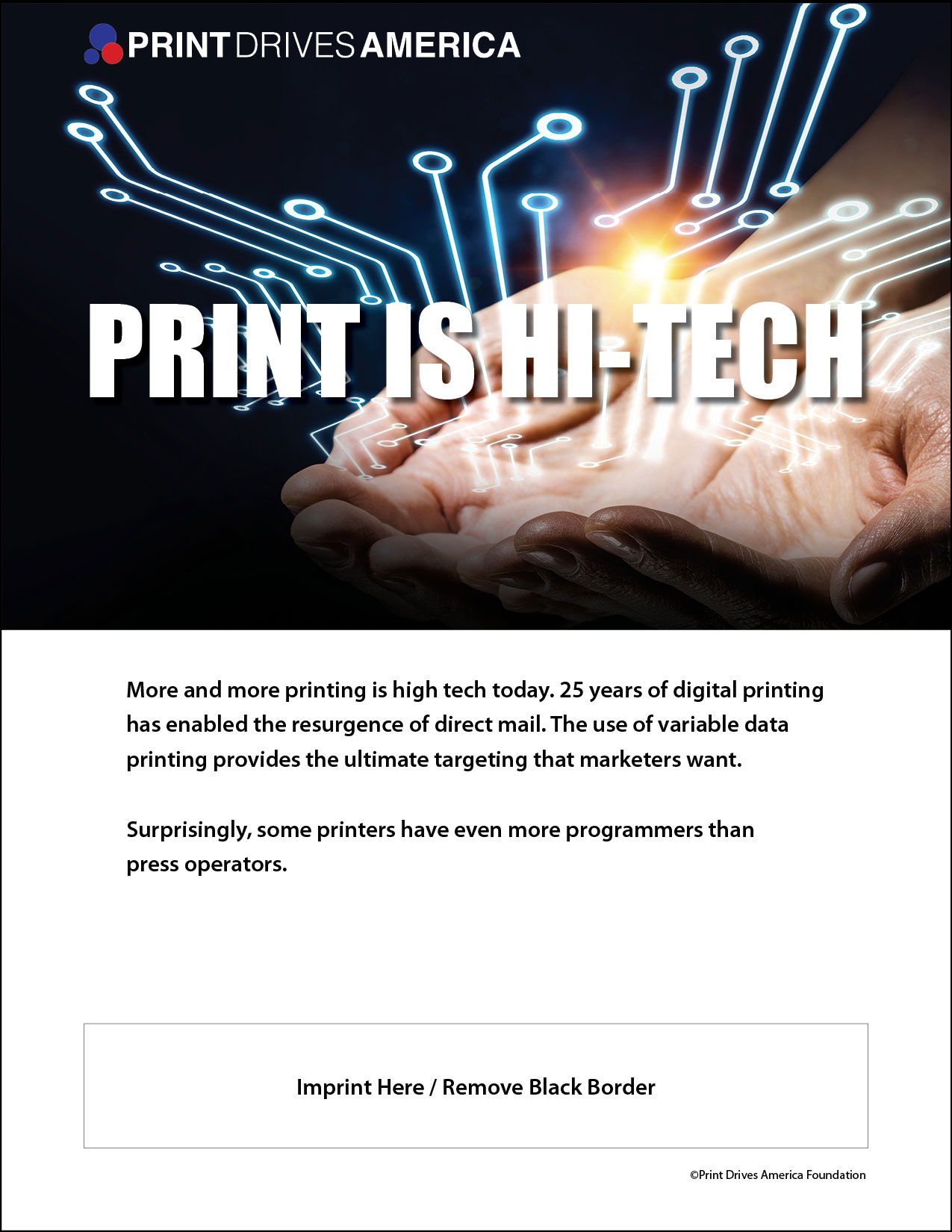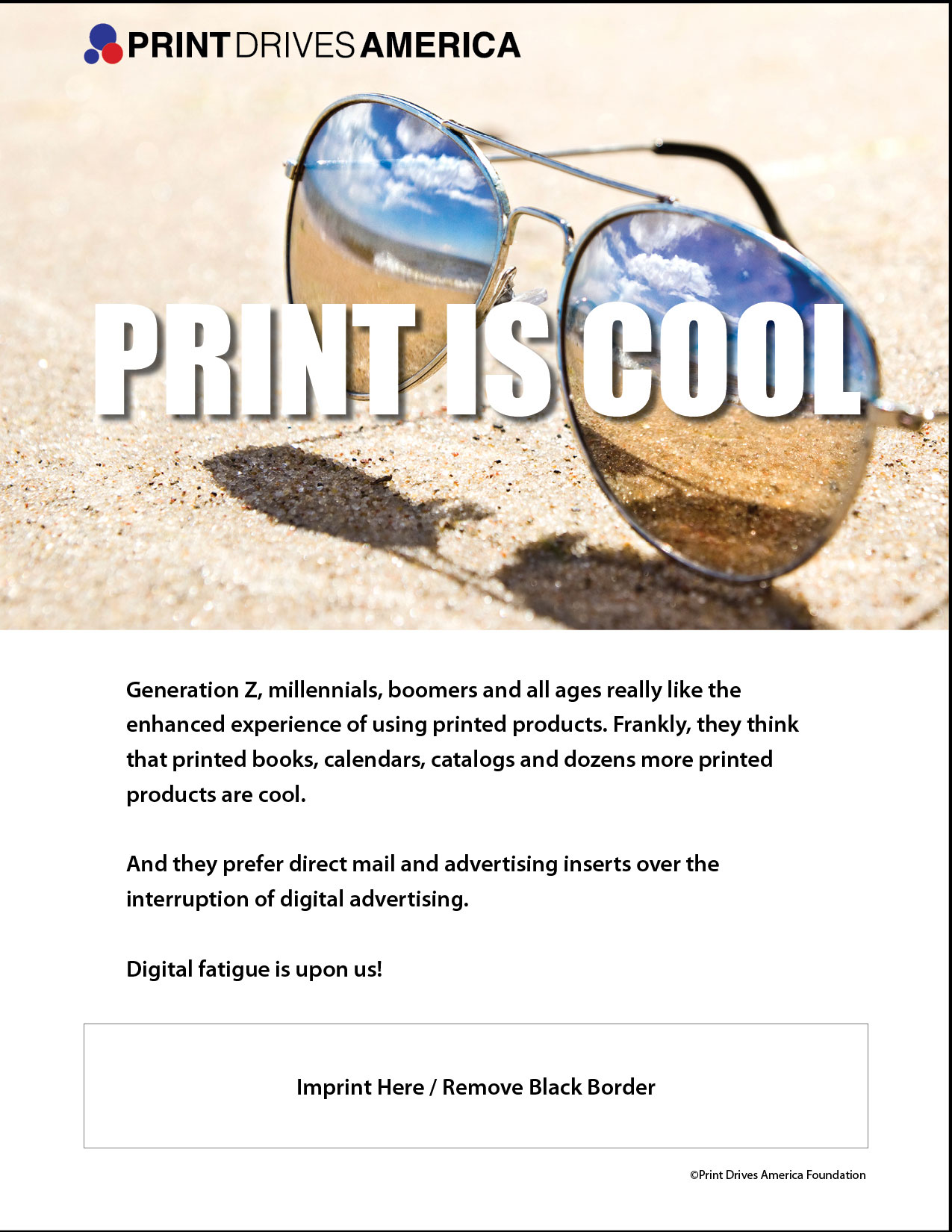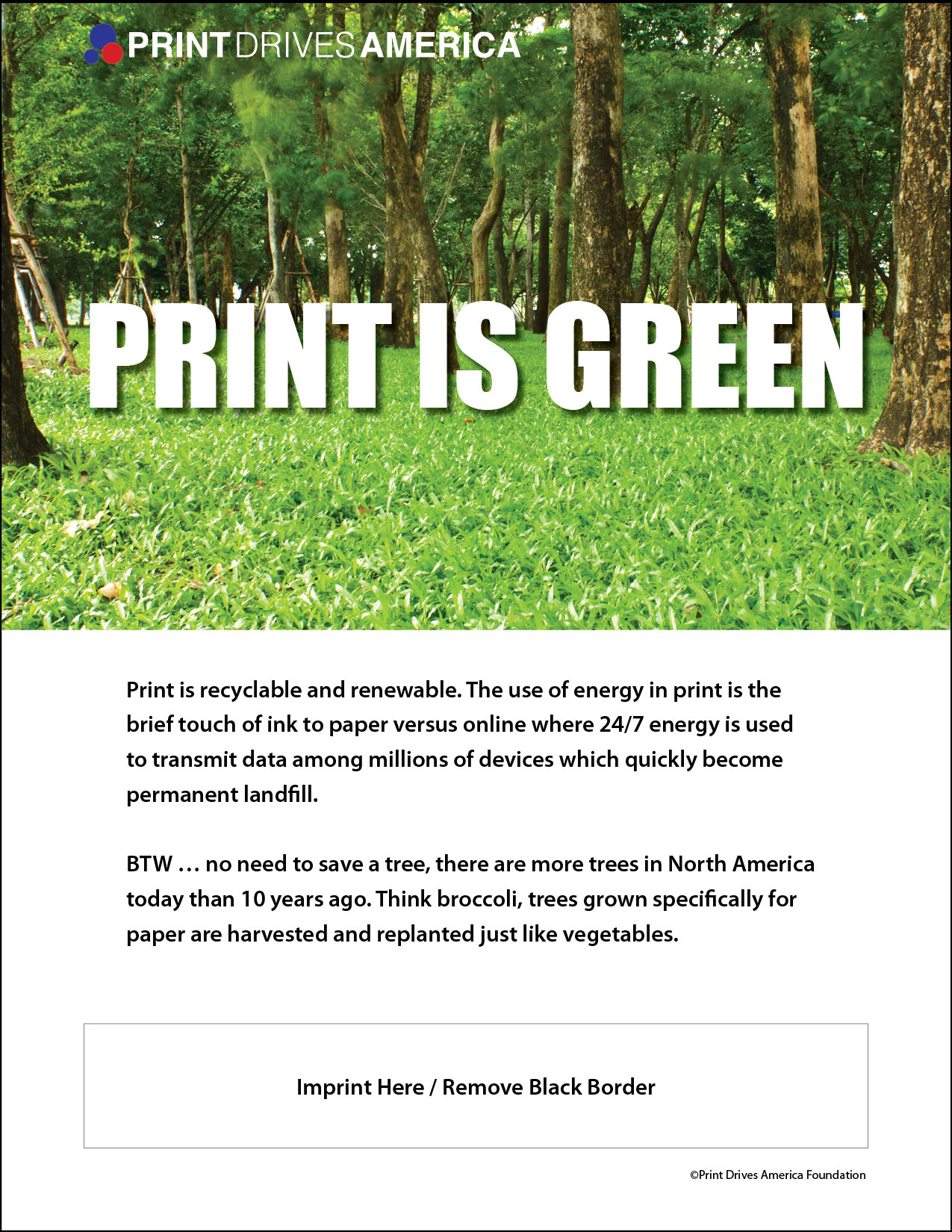Print is tangible, it is influential, it’s portable and print increases your return on investments. Print has the ability to engage the recipient. Unlike digital media, print cannot be easily ignored without reading one single word. In fact, 80 percent of people read their direct mail messages — a 14% increase over the past decade. The average open rate of email messages has continually decreased throughout the past 10 years.
According to a DMA study, direct mail’s average ROI equates to a 13 to one ratio in its return on marketing investments — with the average company investing $167 per person and receiving a total $2,095 per person in return. Additionally, the DMA study found that 67 percent of people prefer to receive communication by direct mail regarding new products and services from companies with which they have had a past relationship.
Everyday the average person will receive over 3,000 messages from friends, family and brands. These messages range from something as simple as a billboard or sign to more personal communication such as a direct mail piece or an email message. Because of new technology communication can be instant — and constant. The average person is constantly connected to the world via their cell phone, iPads, lap tops and tablets. Each of these digital devices enable a person to constantly receive messages.
Due to the high volume of messages, it makes it increasingly harder to gain your audiences’ attention. As a marketer, one of the toughest obstacles is breaking through the clutter of a person’s life. With print, you’re able to break through some of that digital clutter because your message is put directly into the hands of your target audience and it cannot be easily ignored with one simple click of a mouse. Additionally, print tends to last longer in households — about 25 percent of mail is saved and shared with family and friends or displayed in the consumer’s household somewhere.
Timothy Freeman
President
Print & Graphic Communications Association




